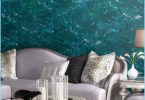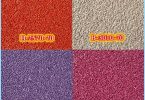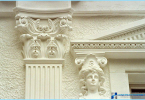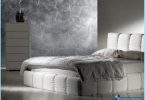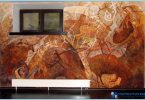The contents
You can endlessly argue what is decorative plaster — a simple surface finish or art. In any case, one fact will remain unchanged: many of the great masters created their masterpieces, using a roller and a spatula.
Decorative plaster veneer species originated about 400 years ago. It was used to make the cathedrals and temples more magnificent. Now this cover in the house can afford each person. You only need to choose the appropriate type and apply the solution.
The facade and interior work ↑
Of course, for internal and external works require a different solution. When applying the layers on the outside it is necessary to consider the degree of influence of the environment on the material. Also, the coating must have high strength and be durable.
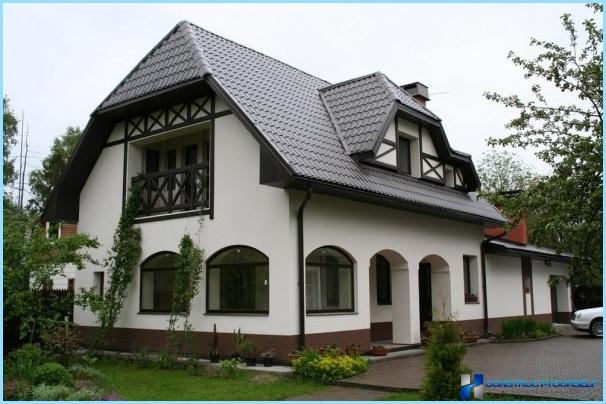
The solution, created for the facade cladding needs to have the frost resistance and be resistant to higher levels of moisture. Moreover, you need to consider the impact of ultraviolet rays.
When you select composite for the facade, account is also taken of the material from which made the building. For example, if a house is built from aerated concrete, no professional Builder would not use lime mortar. As it often happens that such kind of plaster can not normally interact with the material.
The surface inside the building is not subjected to such a hard test, as the outer coating. Therefore, in most cases, buyers pay attention to the appearance and environmentally friendly mixture. About the lack of odor even it is not.
Usually if you choose the internal plaster mixture on the basis of water. Allowed content of polymers, which does not form toxic products of decay. Of course, the main role in the choice of material play a decorative quality. Though about wear resistance and insulating properties should not be forgotten.
The plaster according to the functions ↑
To begin, consider the General classification of the types of plaster. The main criterion we take the basic function of the mixture. In this case, it is possible to distinguish the following types:
- decorative.
- heat,
- acoustic,
- waterproofing,
- special.
As you can see, decorative plaster — this is just one of the types of cladding. Nevertheless, it can be divided into subtypes depending on the type of substance used and the application method on the surface.
Insulating plaster ↑
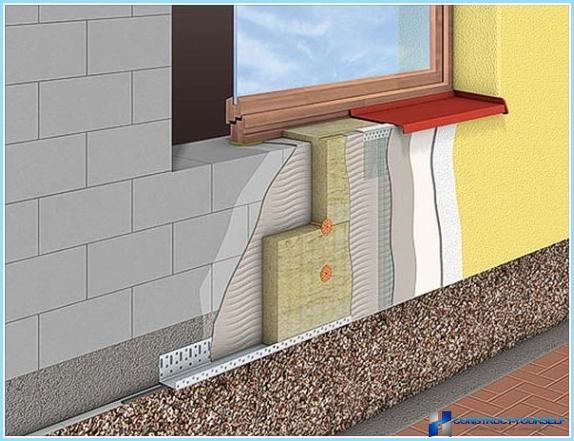
The mixing formulations and adding new components you can give the plaster plenty of additional properties. In the result, the substances are mixed, and the solution incorporates the best properties of each.
For example, in order for any type of plaster was able to enhance the thermal insulation properties needed in the composition of the filler. You can use Styrofoam, the hydromica or perlite.
This kind of plaster adds to the warm microclimate in the house. In addition, its application allows to refuse from the insulation side of the facade. This is a great option for you to save money and make the house warm.
Acoustic plaster ↑
This is a special plaster, which will allow to forget about the loud neighbors and provide inside comfort. This type is used when you need to plaster concert halls, sports facilities or theaters.
Acoustic plaster is simply indispensable if you want to work with curved architecture. To achieve a sound absorbing effect of the composition of the added expanded clay, pumice, slag or vermiculite. For reliable insulation, you should treat the surface with a density of 500-1300 grams per square meter.
Waterproofing plaster ↑
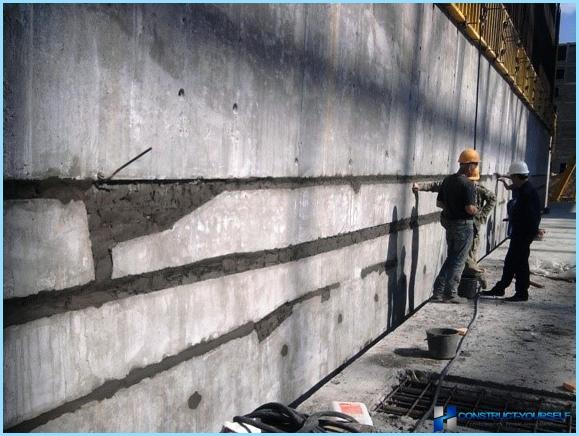
This material is used to create the insulating layer in areas with high humidity. It is composed of waterproof polymers. The highest content requirements are put forward for the lining of pools and wells.
When creating substance for waterproofing are taken into account two factors: the presence of constant contact with water and the degree of hydraulic loads. To achieve the desired result, the composition add a resin of different type:
- polyurethane,
- epoxy,
- acrylic.
To enhance the water repellent quality of the solution should be used in the process of applying special equipment. It is best for this purpose is concret machine.
A special plaster ↑
Application technology is no different from the standard. The main role is played by the material and the fillers that are included. As example we can take x-ray plaster. It is indispensable in hospitals and other medical institutions.
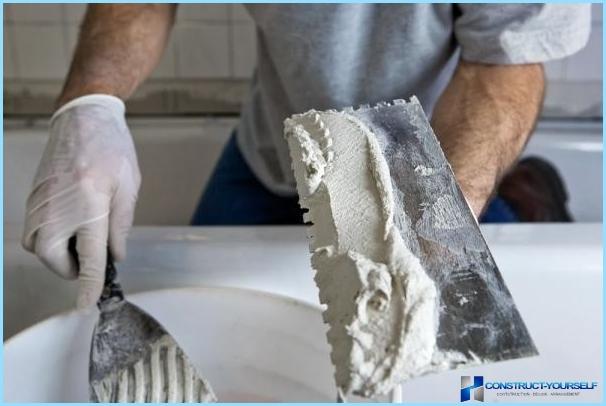
The performance requirements for the substances detailed in GOST 4682-84. The main filler is barite concentrate. Setoguchi solution in its properties it resembles lead shield, only its cost is much lower. That defense was at the proper level, the layer should be at least 50 mm. If necessary, increase it.
The solution solidified, the ambient temperature cannot be below 15 degrees Celsius. Moreover, all the work should be executed in a single run. To stitch pieces of plaster between them is prohibited, as it does not guarantee full protection.
Another special material for the lining is acid-proof plaster. It is indispensable in scientific centers, where work with chemicals and manufacturing. A unique property of the coating is to neutralize chemical fumes.
To achieve the desired consistency in solution is added liquid glass. For full protection it is additionally covered with a layer of cement, which is subsequently overwritten. Also here a stone to fill up the flour and quartzite.
Types of plaster according to the fillers ↑
One of the most popular types considered textured plaster. Its price is more than affordable, and the mechanical and decorative properties are at a good level.
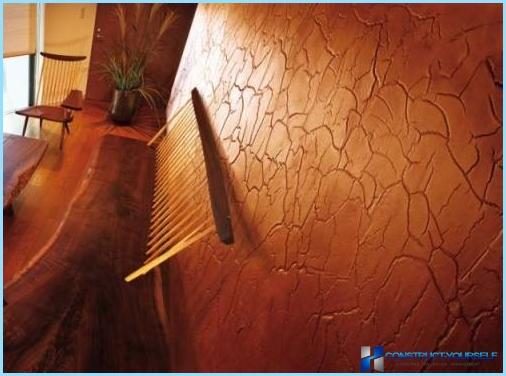
The filler used fiber trees, mica, mineral grit or small stones. As a result, the solidified composition takes on volume. Of course, it needs to make some effort with a roller or spatula, but the result is worth it.
Tree view plaster may resemble the bark of an old tree, if it is properly processed. It is based on natural stones and minerals. Alternatively, the commonly used quartz. Because of the unique appearance of the mixture is called bark.
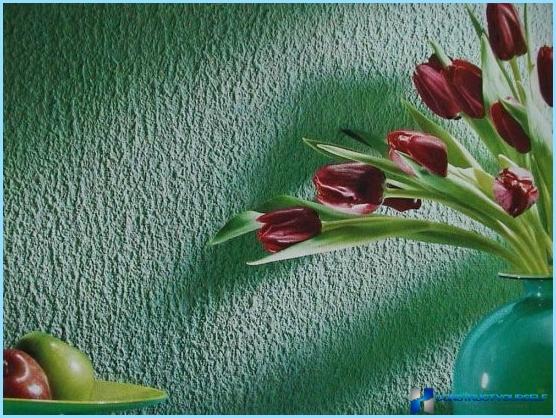
In front view decorative plaster are added various fillers to achieve resistance to temperature extremes, water resistance and sound insulation properties. It is a kind of compromise between reliable protection and attractive appearance.
Gypsum is a kind the decorative plaster. This is perhaps the most environmentally friendly material that can be used for cladding houses. It is based on gypsum and special polymer additives.
Plaster solution provides a high level of adhesion with the surface. Because of this, it is often used to finish ceilings. Its main advantages consider:
- high strength,
- plasticity,
- sustainability.
Gypsum allows for minimal labor costs to level even the most uneven surface. The best effect is provided when working with bricks and concrete.
Venetian plaster. Talking about it endlessly. Unique application technique allows you to create true artistic masterpieces. For the first time some semblance of this technique was used in Ancient Rome, that through many centuries to be reborn in Venice, in a new guise.
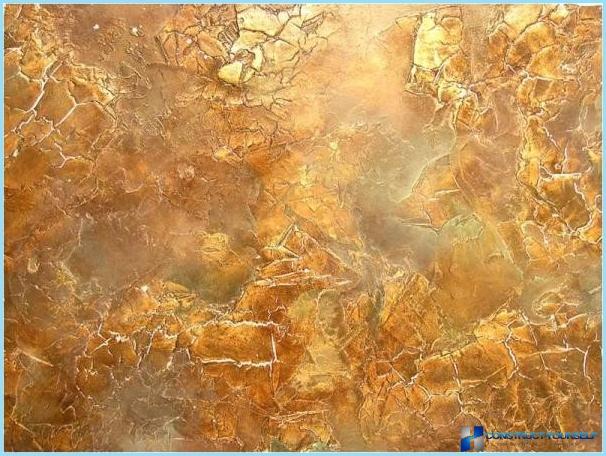
The surface of the Venetian plaster can be glossy or textured. Special attention should be decorative painting. The filler used marble chips.
The application of Venetian plaster ↑
In the process of applying, you will need a roller, spatula, glove intended for wax and metal trowel with rounded edges. Depending on the selected texture can be additional tools and special nozzles on the roller providing the desired effect.
First with a spatula captured a small amount of solution and placed in the trowel. More precisely, on its edge. To achieve three-dimensionality in the process, use short strokes and movements overlap.
The solution distribution should be uneven starting from the top right corner. A trowel is necessary to hold at an angle of 10-15 degrees relative to the surface. Thickness of one layer of not more than three millimeters. The number of layers is three. Drying period of 24 hours for each.
The third layer is translucent. The final stage is polishing. To achieve gloss, use the trowel. The polished surface is rubbed with wax.
The results ↑
Kinds of plaster, there are many. When choosing a solution it is necessary to consider not only its properties and appearance, but also the method of application. Because in most cases people are trying to do this simple job on their own.

